Jones Frontier Review
The Jones Frontier is a do-it-all ride everywhere board, and is the most affordable Jones option. Without being super aggressive, the medium flex, base contour and setback stance make it suitable for whatever terrain you like the best.
I have ridden the Frontier over a few years now, with a few different variations of binding combinations, but my overall impression of the board stays the same. This review is based on riding multiple years of the Frontier, in all kinds of different snow conditions.
Features of the Jones Frontier
Directional Shape
The nose is longer than the tail, which gives the board better float in powder.
Directional Flex
Similar to the shape, directional flex often means that the tail is stiffer than the nose, to help make up for its shorter length.
Directional Rocker
A hybrid profile, that has camber between your feet, a little bit of rocker on the tail and a larger rocker nose. Made to get the best of both styles, the camber section keeps the board stable, while the rocker makes turning smooth, and helps float in powder.
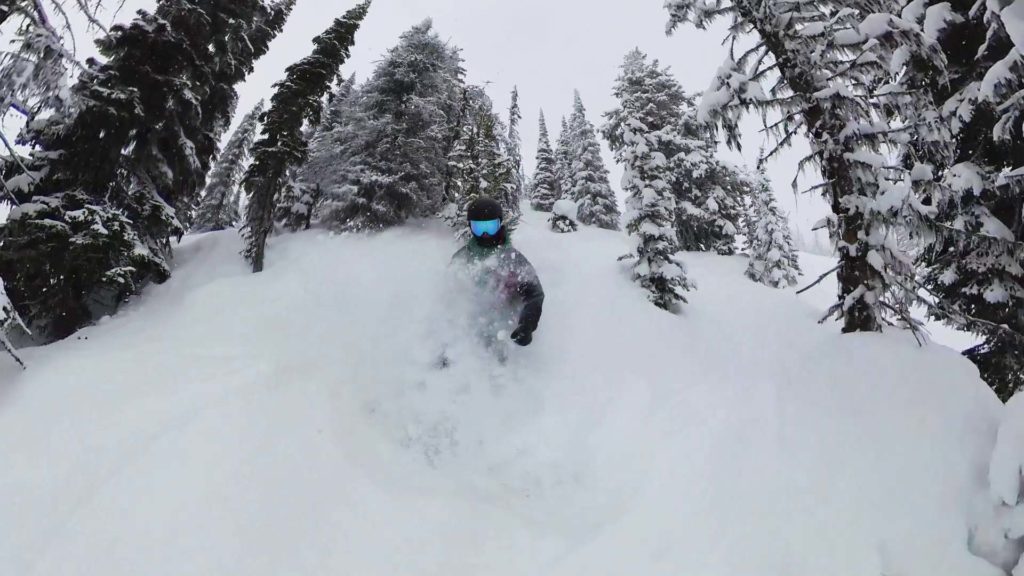
3D Contour Base 1.0
A small amount (2mm) of spoon or base shaping, that that lifts the edges on the nose and tail of the board, giving it a looser and more forgiving ride, as well as helping add to the float in deep snow.
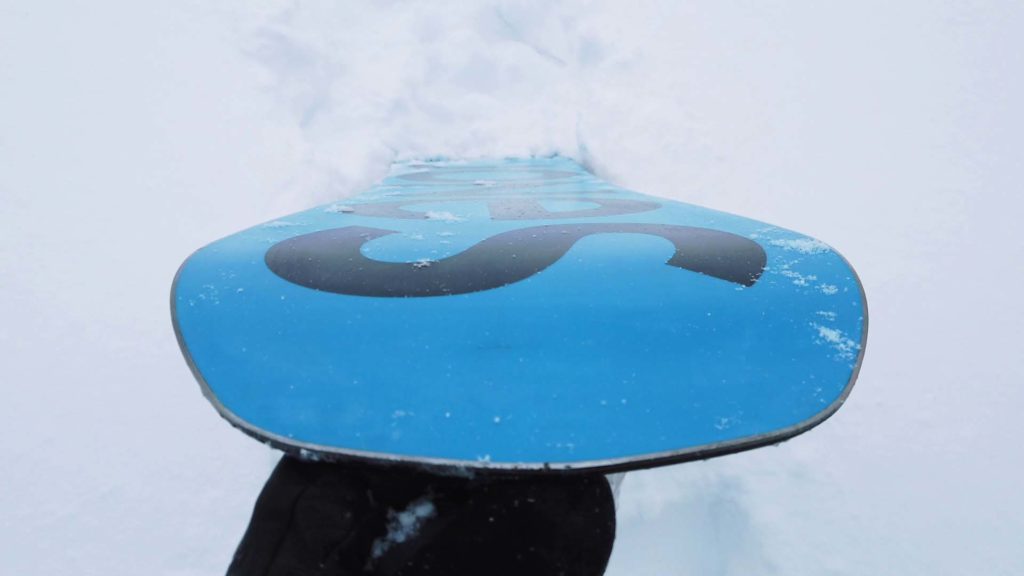
Progressive Sidecut
As you get closer to the ends of the sidecut, the radius of the sidecut gets bigger, which means that you get a smoother entry and
V-Core
6/10 Flex
A touch stiffer that medium flex – though I think that it feels stiffer than Jones rate this board.
Traction Tech
Not called Magne-Traction anymore, but it has a serrated or lumpy edge, which helps the board cut into hardpacked snow and ice, giving you better edge hold.
Flip Flop Base
Each base alternates, so one board might have a blue base with a black Jones logo, while the next one is made up of the opposite parts, so it will have a mainly black base with a blue Jones logo.
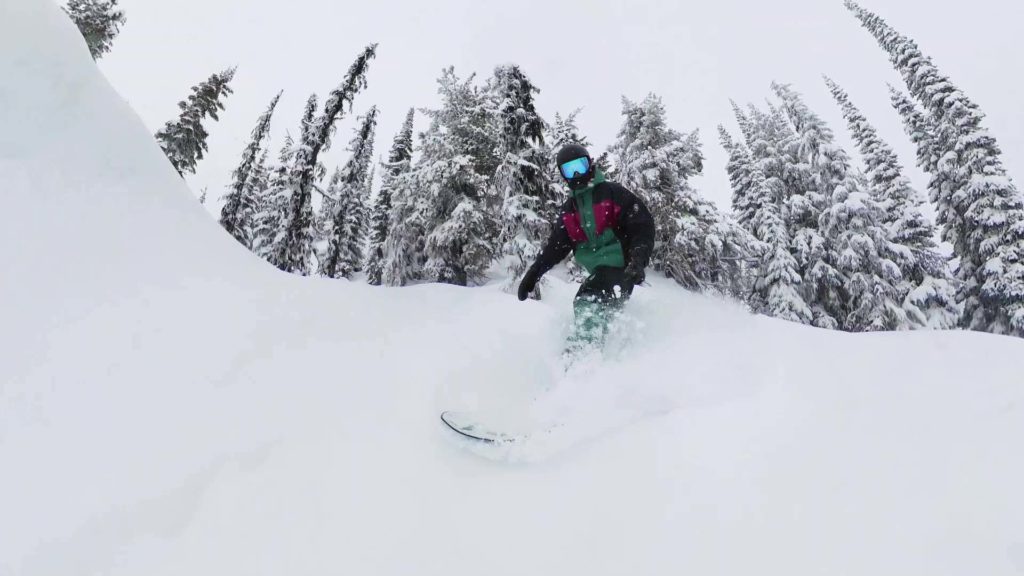
Sintered 7000
A sintered material, that has added carbon, and does a good job at soaking up wax.
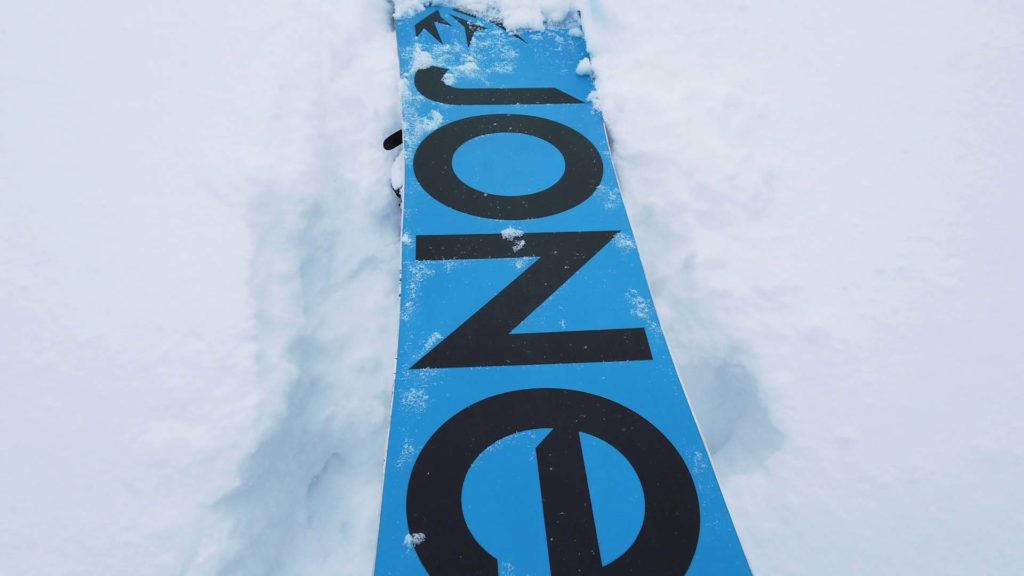
Wend Natural Wax
Just the brand of wax that is used when they give the board the factory wax.
Biax Fiberglass
Two directions of fibers, that give a easy and predictable flex rating, that has a softer “torsional” or twisting flex.
Factory Tuned
The tip and tail of the board are detuned at the factory, so combined with the factory wax, you can take the board straight out of the plastic from the shop and start riding.
Recycled ABS Sidewalls
All the ABS plastic used in the sidewalls is recycled.
Oversized Recycled Edges
Thicker than normal edges are a bit tougher, and made from recycled steel.
Eco Plastic Topsheet
Made from castor beans, it is lightweight, resistant to scratches and also repels snow, so less of it will sit on your board.
Super Sap Bio Resin
Rather than a resin that is based on petroleum, Jones boards are made with a bio-based resin.
FSC Classic Core
A poplar wood core that gives you good pop, an even flex and durability.
How the Frontier Rides
Board size: 156cm
Boots: Salomon Launch Boa SJ
Bindings: Jones Apollo / Now Drive / Salomon Highlander
Height: 6ft / 183cm
Weight: 155lbs / 70kg
I have ridden the Frontier a few times in Australia, as well as when the older version was called the Explorer. The video above was also riding the same size Frontier, in good conditions in Big White, BC, Canada.
The conditions that I rode in Australia were standard spring conditions that we get a lot of here – which is hard and fast in the morning, which melts to softer slush during the afternoon.
The video shows it well, but there was some nice fresh snow when I was riding it in Canada. Soft, light and dry snow, which was a good change to see how the board did in some different conditions.
Camber Profile
The Directional Rocker profile is a pretty popular style, almost every brand has something that is similar, keeping camber between your feet, with rocker on the nose and tail. It is popular because it works, and you get most of the good parts of a traditional camber board, with less of a catchy feel.
Although rocker to camber profiles are fairly common, one thing that is a bit more unique to the Jones boards is the 3D Contour bases, which means that the nose and tail have a little bit of spoon. Although there are a few brands with a similar shape to the base, it is much less extreme than on brands like Bataleon.
Because the contact points are lifted just a little bit above the snow, the board does have a slightly looser feel. When you ride it with a flat base, you can swivel the board without it feeling like it will grab the snow, or want to catch. On some boards the lifted edges can slow down the edge to edge feel, because you have to push the board further on its edge to start a turn. I didn’t really notice that the Frontier felt slow to turn at all, which is probably because the shape is so small.
Flex and Pop
Although Jones rate this as a 6/10, and is one of their “softer” boards, it felt a bit stiffer than that to me when I was riding it. It could be easy to think that because it is the cheapest mens Jones board, it is soft and easy – but it has a solid flex, which makes it quite capable overall.
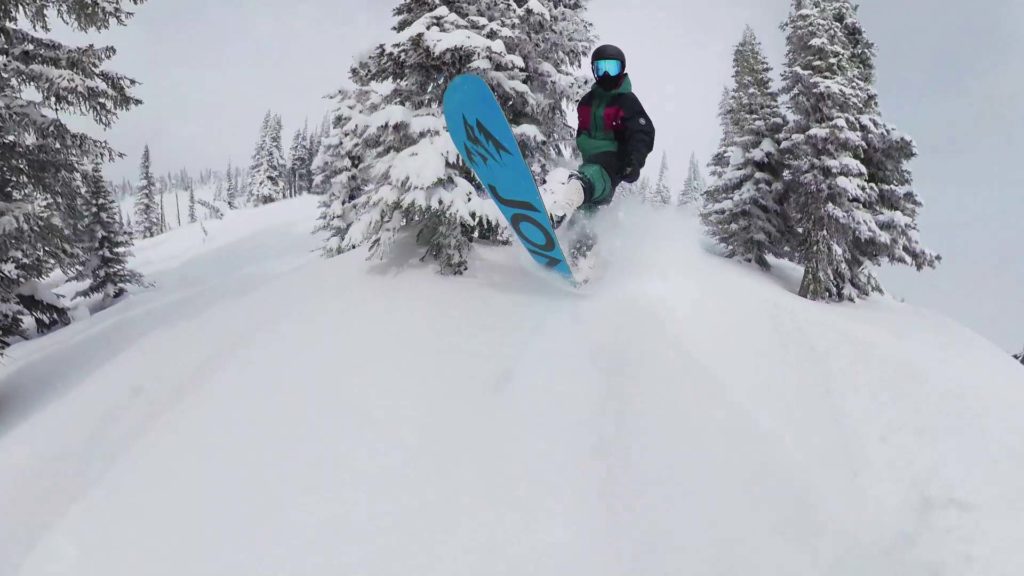
Edge Hold
In general, there isn’t much to complain about with the edge hold. Any board that has this much camber, as well as a similar flex rating should have a reliable feel, which it does. There is the tiniest bit of “slack” getting the board onto its edge, but it is hardly noticeable, and the benefits of having a bit more forgiveness when you aren’t riding perfectly balances it out.
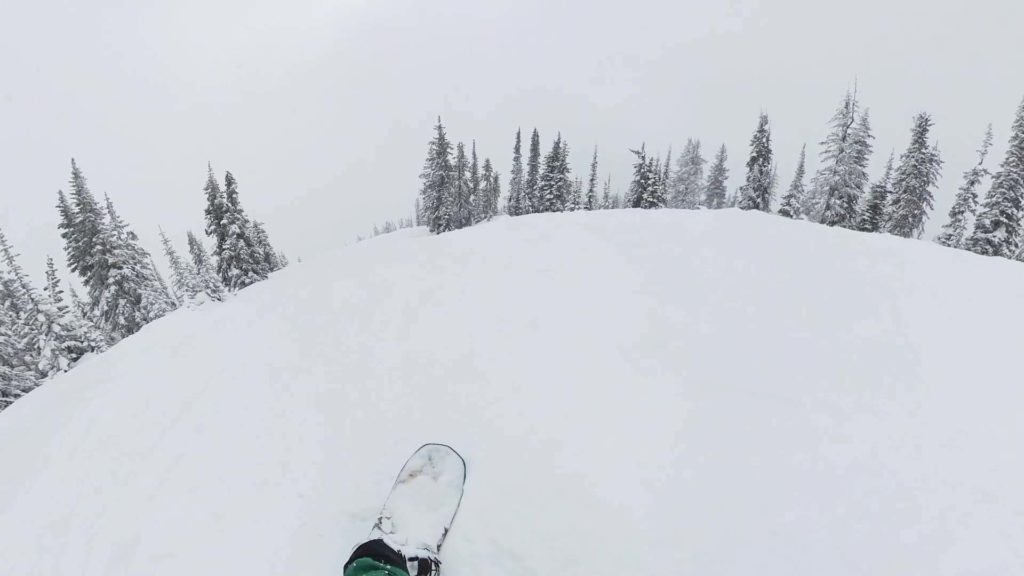
Speed
Speed wasn’t a problem at all, it was a freshly waxed board on cold and fairly dry snow, so it seemed quite quick. I had ridden the Frontier in slushy conditions and it was fine, though not as fast as other Jones boards that have the Sintered 9000 base.
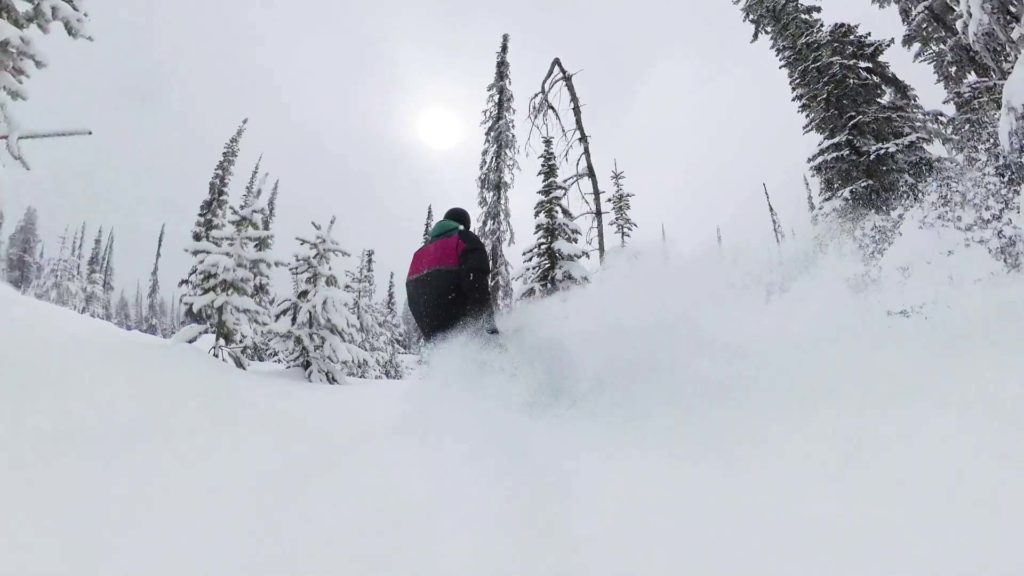
Overall
Overall, the Frontier is one of the easiest boards to recommend for quite a lot of riders. If you are looking to get one board that will do well on groomers, through the park and in powder, this would be it.
For the decent price, you get a board with a good sintered base, that will float in deep snow, is cruisy and easy to ride if you want it to be, while still being able to get a lot out of it if you are a more aggressive rider.
This is going to suit riders who would call themselves intermediates or above, or could even be good as a first board, if you are a quick learner and don’t mind a little bit of a learning curve.
It has enough camber to keep it solid and stable when you ride fast, with plenty of edge hold, though with the 3D Base Contour you won’t find that it has anywhere near the same aggressive “catchy” feel that full camber boards have.
If you have any questions about the Frontier, or are trying to narrow down a new boards, leave a question in the comments below.
Where does the Frontier sit in the Jones line?
Mountain Twin
- 7/10 Flex
- Camrock
- 3D Contour Base 2.0
- Traction Tech 3.0
- Sintered 8000 Base
- $549.99
The Mountain Twin isn’t a step down from the Frontier, but it is a step closer to a plain twin board. The next step up in base shaping and edge tech and a tiny bit stiffer.
Read moreFrontier
- 6/10 Flex
- Directional Camber
- 3D Contour Base 1.0
- Traction Tech 2.0
- Sintered 8000 Base
- $499.99
Technically the Frontier is the entry level/lowest board in the Jones mens lineup, though it isn’t really missing anything.
Find pricesFlagship
- 8/10 Flex
- Directional Camber
- 3D Contour Base 3.0
- Traction Tech 3.0
- Sintered 9900 Base
- $699.99
Stiffer flex, more base shaping, edge tech, with a faster base and quite a bit more expensive. Slightly narrower waist widths than the Frontier.
Read moreJones Frontier Technical Specs
| Length | Effective Edge (cm) | Nose Length (cm) | Tail Length (cm) | Waist Width (cm) | Nose Width (cm) | Tail Width (cm) | Sidecut (m) | Setback (cm) | Weight Range (lbs) | Weight Range (kg) |
| 152 | 111 | 23 | 21 | 24.9 | 29.07 | 29.05 | 7.1 | 2 | 110-160 | 49-73 |
| 156 | 114.4 | 23.3 | 21.3 | 25.2 | 29.51 | 29.49 | 7.25 | 2 | 120-170 | 54-77 |
| 158 Wide | 116 | 23.5 | 21.5 | 26.2 | 30.51 | 30.49 | 7.45 | 2 | 140-190 | 64-86 |
| 159 | 127 | 23.5 | 21.5 | 25.4 | 29.81 | 29.79 | 7.45 | 2 | 140-190 | 64-86 |
| 161 Wide | 118.6 | 23.7 | 21.7 | 26.4 | 30.8 | 30.78 | 7.65 | 2 | 150-200 | 67-91 |
| 162 | 119.6 | 23.7 | 21.7 | 25.6 | 29.97 | 29.95 | 7.85 | 2 | 160-210 | 73-95 |
| 164 Wide | 121.2 | 23.9 | 21.9 | 26.6 | 30.98 | 30.97 | 8.05 | 2 | 170-220+ | 77-100+ |
| 165 | 121.8 | 24.1 | 22.1 | 26.0 | 30.38 | 30.37 | 8.15 | 2 | 170-220+ | 77-100+ |
| 167 Wide | 123.8 | 24.1 | 22.1 | 26.8 | 31.23 | 31.22 | 8.35 | 2 | 170-220+ | 77-100+ |
Previous season graphics
(2019 and earlier the board was called the Jones Explorer)
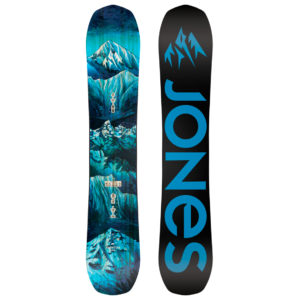
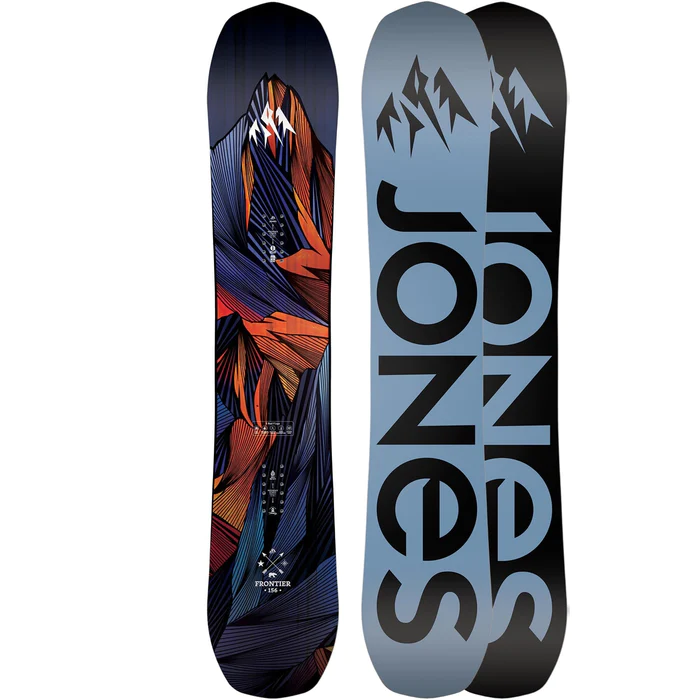
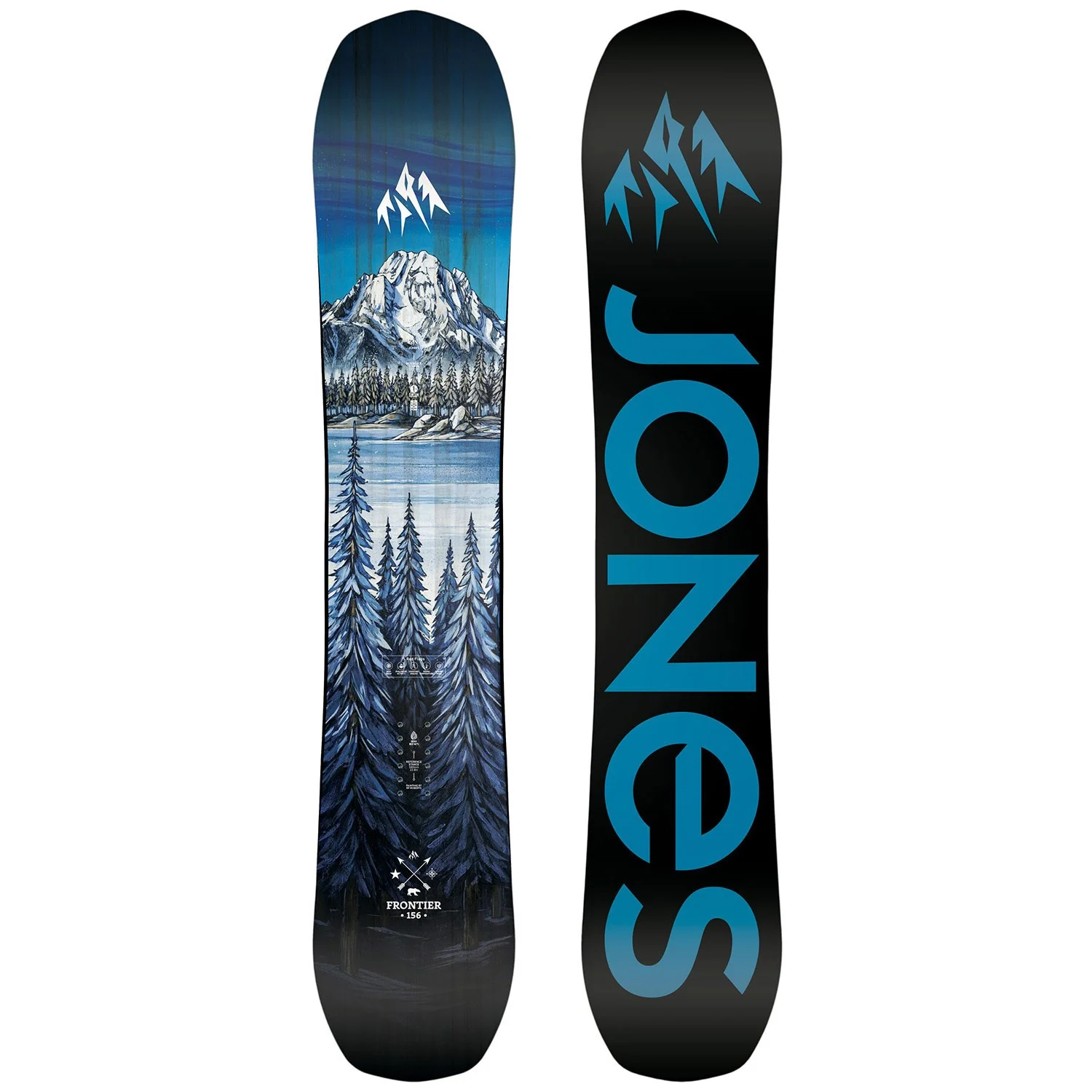
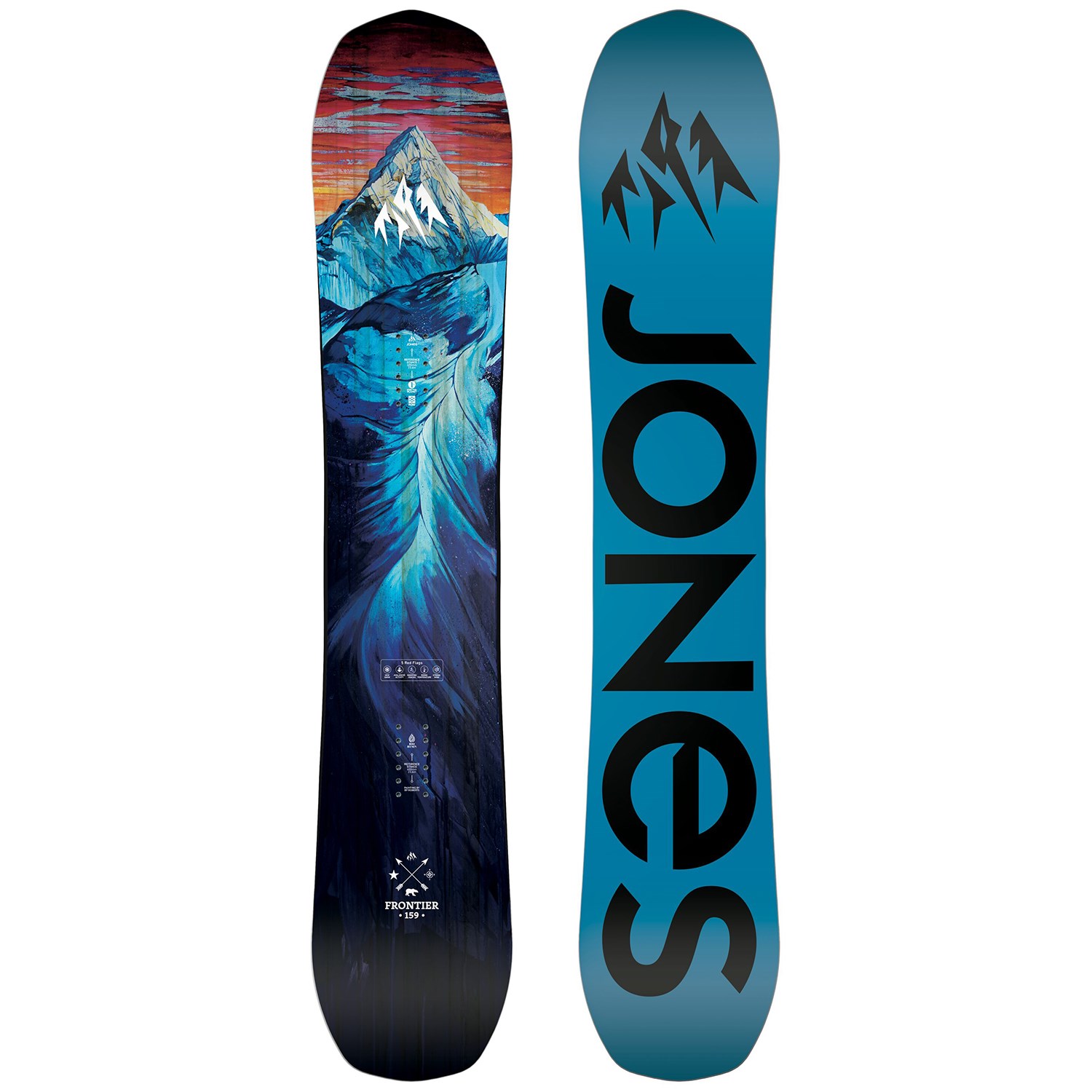
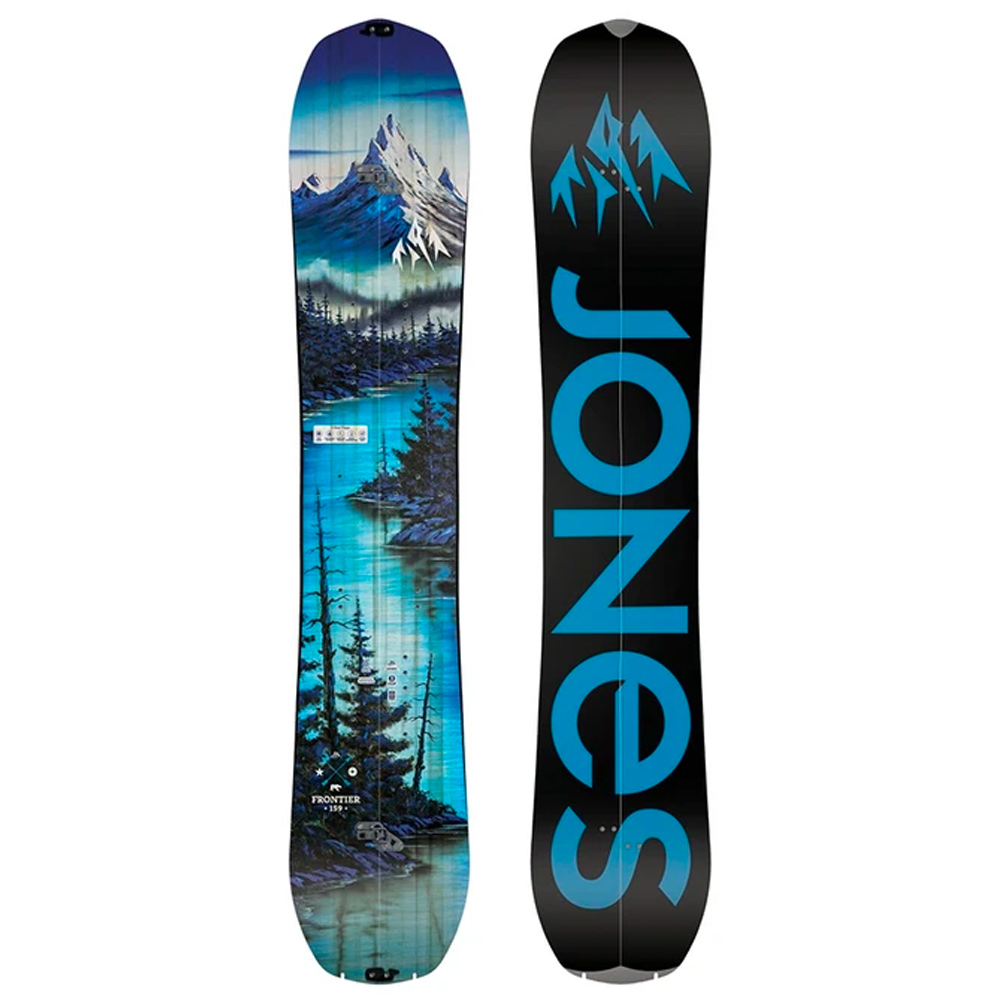
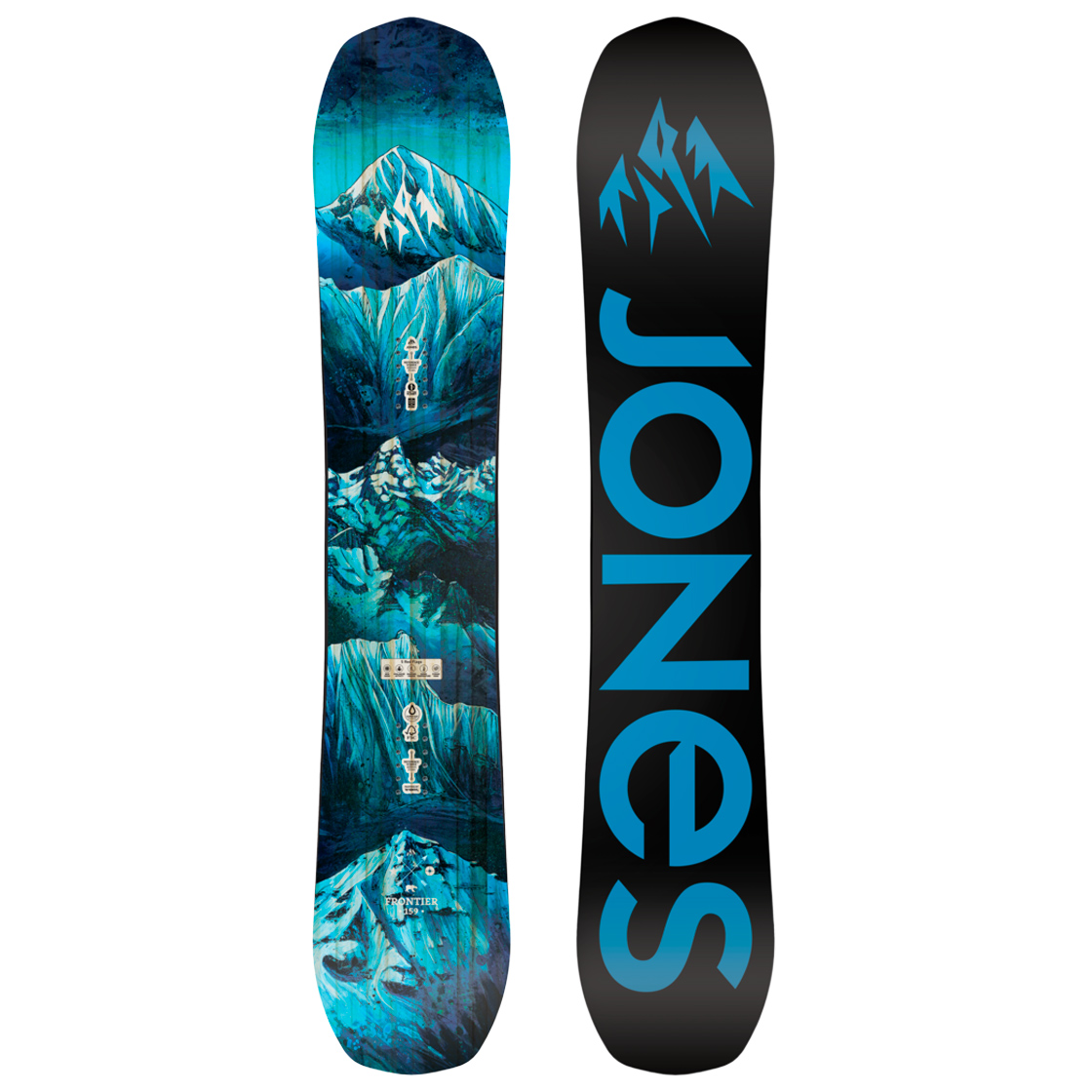
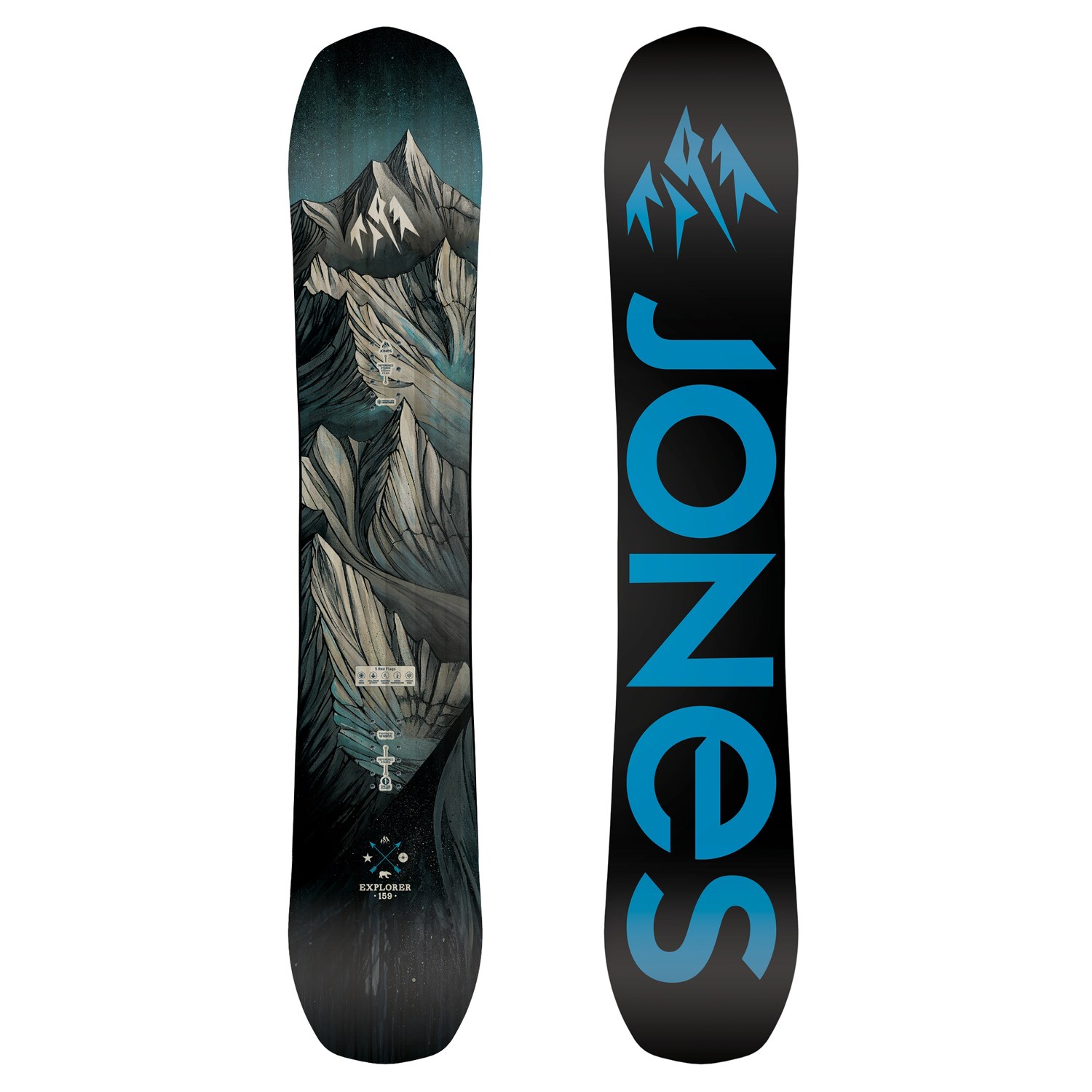
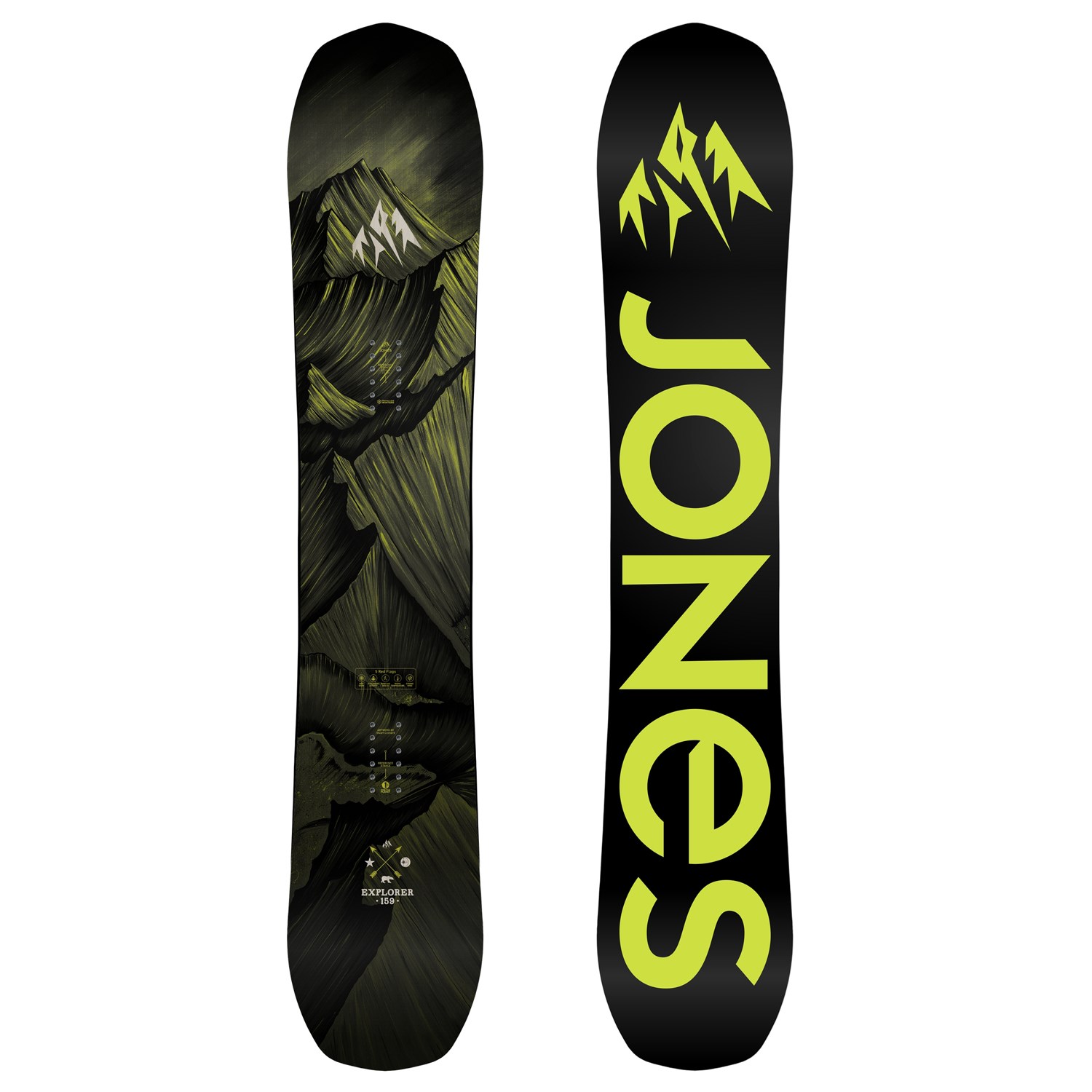
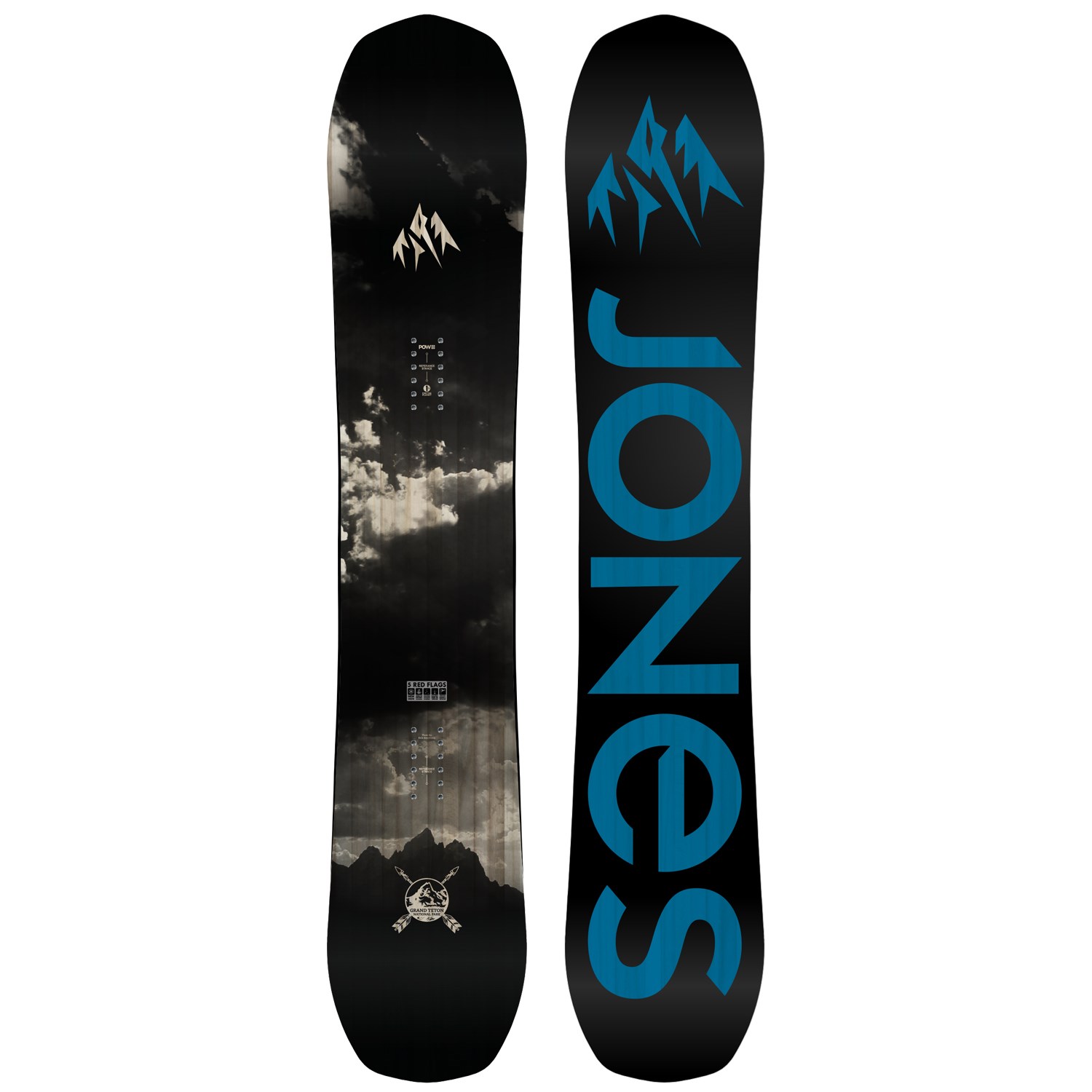
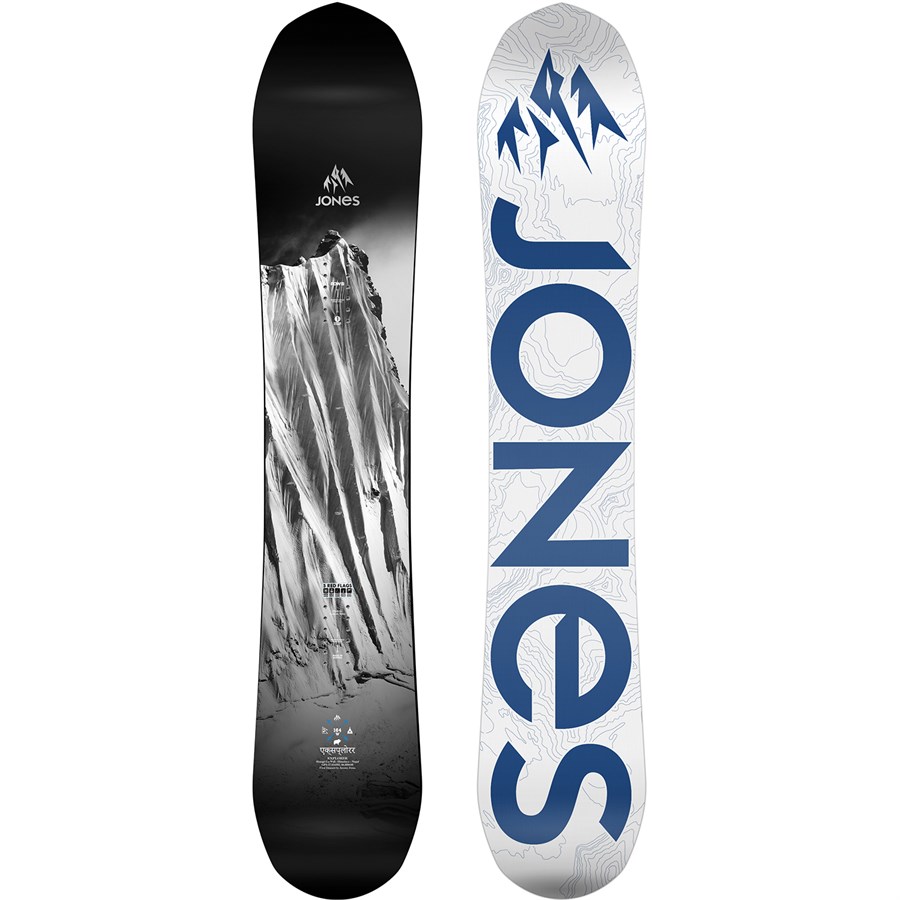
Hi, got a couple of questions:
1. How tall are you / weight?
2. What stance (width) did you use on the board?
3. What angles do you use?
I am 6 foot tall (183cm), and weight around 72kg or 160lbs. I used the recommended stance width on the Frontier, that I think is around 22ish inches – and I use the same andgles of +12 on the front foot, and -9 on the back for every board I ride.
Hi
I would like your expert opinion on the choice of two snowboards:
Nitro team camber
jones frontier
I have an intermediate level and I am most often on the groomers, then sidehits and if possible powder between the trees (but not sometimes)
I’m not going to the snowpark
I’m looking for a good grip and stability, but fun and playful ( if possible )
I would put the Jones Frontier as the top choice. The shaping on the base will help it feel more fun and playful, and the shape will help it float in powder. The camber version of the Team is still a good board, but because it is full camber, it won’t be as playful and will need a bit more work to get the most out of it.
Hey mate how does this do in spring conditions? I live in North Island New Zealand and that’s the time of the year I mostly choose to ride now. I’m older so prefer to now just cruise around slashing slush and going for a short hike to find untracked soft snow if possible. I was thinking of buying either the 159 Jones Frontier or the 158 Burton Skeleton Key for my one resort board. Plus I already have a 161 Jones Solution split board. Any advice apreciated.. Thanks
It is quite solid in spring conditions, it still holds a good edge, and has enough stiffness to keep everything feeling stable. I haven’t ridden the Solution, but I would expect that it will have a familiar “Jones” feel to the board.
The Skeleton Key is a good option as well. It feels lighter than the Frontier, but the tradeoff is that it will get pushed around a little more on chunky terrain, while the Frontier will smash through a bit better.